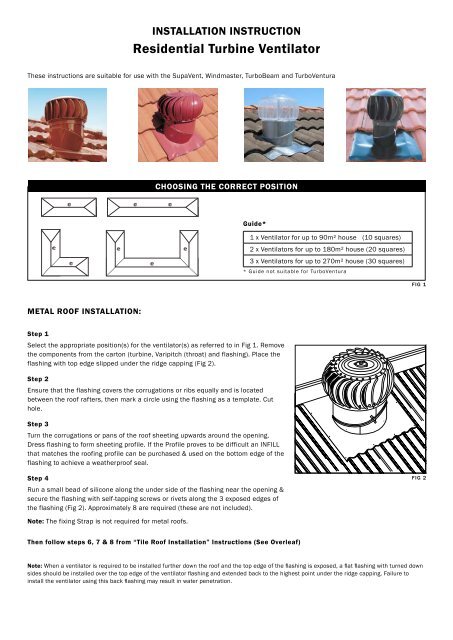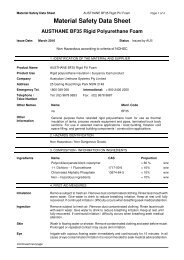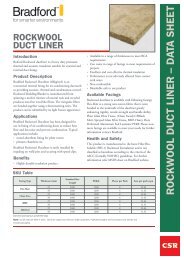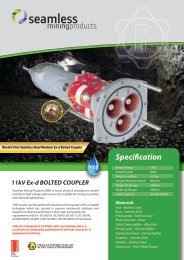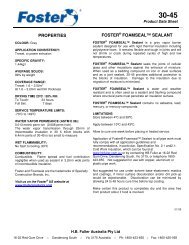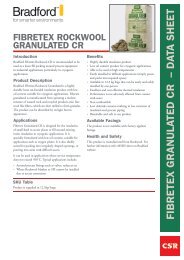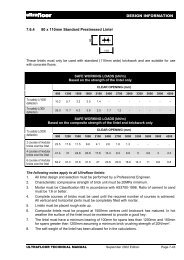Residential Turbine Ventilator - Insulation Industries
Residential Turbine Ventilator - Insulation Industries
Residential Turbine Ventilator - Insulation Industries
Create successful ePaper yourself
Turn your PDF publications into a flip-book with our unique Google optimized e-Paper software.
INSTALLATION INSTRUCTION<strong>Residential</strong> <strong>Turbine</strong> <strong>Ventilator</strong>These instructions are suitable for use with the SupaVent, Windmaster, TurboBeam and TurboVenturaCHOOSING THE CORRECT POSITIONGuide*1 x <strong>Ventilator</strong> for up to 90m² house (10 squares)2 x <strong>Ventilator</strong>s for up to 180m² house (20 squares)3 x <strong>Ventilator</strong>s for up to 270m² house (30 squares)* Guide not suitable for TurboVenturaFIG 1METAL ROOF INSTALLATION:Step 1Select the appropriate position(s) for the ventilator(s) as referred to in Fig 1. Removethe components from the carton (turbine, Varipitch (throat) and flashing). Place theflashing with top edge slipped under the ridge capping (Fig 2).Step 2Ensure that the flashing covers the corrugations or ribs equally and is locatedbetween the roof rafters, then mark a circle using the flashing as a template. Cuthole.Step 3Turn the corrugations or pans of the roof sheeting upwards around the opening.Dress flashing to form sheeting profile. If the Profile proves to be difficult an INFILLthat matches the roofing profile can be purchased & used on the bottom edge of theflashing to achieve a weatherproof seal.Step 4Run a small bead of silicone along the under side of the flashing near the opening &secure the flashing with self-tapping screws or rivets along the 3 exposed edges ofthe flashing (Fig 2). Approximately 8 are required (these are not included).FIG 2Note: The fixing Strap is not required for metal roofs.Then follow steps 6, 7 & 8 from “Tile Roof Installation” Instructions (See Overleaf)Note: When a ventilator is required to be installed further down the roof and the top edge of the flashing is exposed, a flat flashing with turned downsides should be installed over the top edge of the ventilator flashing and extended back to the highest point under the ridge capping. Failure toinstall the ventilator using this back flashing may result in water penetration.


